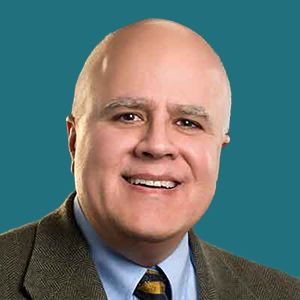Gene-Edited Exa-Cel Continues to Show Long-Term Benefit in Sickle Cell, Thalassemia
Data from up to 5 and 6 years of follow-up were presented at the 2024 EHA Congress.
Haydar Frangoul, MD, MS

Exagamglogene autotemcel (exa-cel), Vertex and CRISPR’s gene editing therapy approved as Casgevy for treating sickle cell disease (SCD) and transfusion-dependent thalassemia (TDT) has continued to demonstrate long-term clinical benefit in both indications. Both treated populations also experienced clinically meaningful improvements in their quality of life.1,2
Longer term data from trials of exa-cel were presented at the European Hematology Association (EHA) 2024 Hybrid Congress, held June 13-16 in Madrid, Spain, and virtually. New data from 46 patients with SCD from the CLIMB SCD-121 trial (NCT03745287) with follow-up for up to 4.8 years were presented by Haydar Frangoul, MD, MS, director, pediatric hematology/oncology, Sarah Cannon Pediatric Transplant and Cellular Therapy Program at TriStar Centennial. Data from 56 patients from the TDT CLIMB THAL-111 trial (NCT03655678) with follow-up over 5 years, with 1 patient reaching 6 years of follow-up, were presented by Franco Locatelli, MD, PhD, head, Department of Pediatric Hematology and Oncology, IRCCS Bambino Gesu Children's Hospital, Rome.
“The increase in total hemoglobin is durable and approaches normal or near normal levels. The stable allelic editing in both bone marrow and peripheral blood indicates a durable benefit for these patients... [with] an improvement in quality of life,” Locatelli said during his presentation.2 “These longer follow-up up confirm that exa-cel has the confirm to provide a 1-time functional cure to patients with TDT. With longer follow-up... the success rate is likely 100%.”
In patients with SCD, 36 out of 39 (92.3%) evaluable patients with at least 16 months of follow-up were free from vaso-occlusive crises (VOCs) for at least 12 consecutive months (VF12), with a mean duration of VOC-free of 27.9 months, with a maximum of 54.8 months. VF12 was the trial’s primary endpoint supporting approval. Similarly, data continued to support a key secondary endpoint of remaining free from hospitalizations related to VOCs for at least 12 consecutive months (HF12), with 38 of 39 (97.4%) evaluable patients achieving this endpoint.1
WATCH NOW: Akshay Sharma, MBBS, on the Rapidly Expanding Landscape of Care for Sickle Cell Disease
Frangoul emphasized similar efficacy seen between adult and adolescent patients, with 26 of 28 adults (92.9%) and 10 of 11 adolescents (90.9%) achieving VF12. Similarly, adults and adolescents had similar percentages of total hemoglobin and fetal hemoglobin.1
“For us who treat patients with SCD we know that intravascular hemolysis is an important pathophysiology in the disease and lactate dehydrogenase and haptoglobin are great measures for intravascular hemolysis. Before the treatment, every patient had elevated LDH above what you’d expect and within 3-6 months it normalized and stayed within the normal range with a follow-up for 36 months and now up to 5 years,” Frangoul said during his presentation.1
In patients with TDT, 49 of 52 (94.2%) evaluable patients were transfusion-independent for at least 12 consecutive months with a mean weighted hemoglobin of at least 9 g/dL (TI12), with a mean duration of transfusion independence of 31.0 months, with a maximum of 59.4 months, corresponding with the trial’s primary endpoint. All evaluable treated patients remain transfusion free.2
Two of the 3 patients who did not achieve TI12 in CLIMB-111 achieved TI12 in the long-term follow-up study, CLIMB-131, and have been transfusion independent for over 1 year. The third has been transfusion free for 3.4 months after a transient episode of anemia ended a 10.6-month period of transfusion independence.2
Click here to view more coverage of the 2024 EHA Congress.